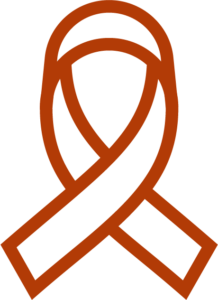
Fridhammar A, Gustafsson A, Andersson E, Steen Carlsson K
Värdet av utökad mammografiscreening till äldre åldersgrupper
The report is written in Swedish with a summary in English
Breast cancer is the most common type of cancer among women causing more than 1,300 deaths each year in Sweden. The risk of both developing and dying from breast cancer increases with age. Mammography screening allows for detection at an earlier stage, often before clinical symptoms appear. Women aged 40–74 years in Sweden are invited to mammography screening regularly in accordance with the National Board of Health and Welfare’s guidelines from 2014. Screening is not currently recommended for women aged 75 and older, as there are no randomized clinical studies on mortality in these age groups.
Objective
The purpose of this report is to assess the health outcomes, costs, and cost-effectiveness of extending mammography screening beyond the current upper age limit of 74 years. The analysis uses two scenarios wherein the upper age limit for screening is increased to either 79 or 84 years.
Model-based analysis
The report presents a model-based analysis using statistics from the National Quality Register for Breast Cancer. These statistics show that breast cancer in women over 75 is often detected at later stages compared to women 70-74 years old. The analysis therefore explores the impact of an assumption that extending the upper age limit for screening would shift detection from later to earlier stages. The model assumes that women aged 75–84 would have the same distribution between screening detection and clinical detection as women aged 70–74 today. The calculations also include possible overdiagnosis, since screening may identify cancers that would never have caused symptoms. The cost-effectiveness of extending the upper-age limit is estimated using two perspectives: a healthcare perspective, which includes only healthcare costs, and a societal perspective, which also include informal care provided by relatives.
Results
The findings indicate that expanding the breast cancer screening program would likely improve health outcomes, though it would also lead to higher costs.
- Extending the upper age limit to 79 years would mean that an additional 108,000 women would be screened each year. This is estimated to result in an additional 115 women being diagnosed with cancer in situ and 55 women with invasive breast cancer. Furthermore, it is expected to prevent 34 deaths, corresponding to an estimated gain of 296 life years and 193 quality-adjusted life years. The costs of screening itself are expected to increase by SEK 74 million, while treatment costs are expected to decrease by just under SEK 30 million. This results in an increase in total healthcare costs of just under SEK 45 million. In addition, the costs of informal care are estimated to decrease by SEK 3.6 million. The cost per quality-adjusted life year gained is estimated at approximately SEK 231,000 from a healthcare perspective and SEK 212,000 from a societal perspective.
- Extending the upper age limit to 84 years, would result in an additional 181,000 women being screened. A total of 199 additional women is estimated to be diagnosed with cancer in situ and 102 with invasive breast cancer. The model estimates that 76 deaths could be prevented. This corresponds to 576 life years gained and 387 quality-adjusted life years gained. Raising the upper age limit to 84 years is expected to increase screening costs by SEK 124 million, while reducing treatment costs by SEK 46 million and informal care costs by just under SEK 11 million. Overall, this amounts to an increase in total healthcare costs of approximately SEK 78 million. The estimated cost per quality-adjusted life gained is about SEK 201,000 from a healthcare perspective and SEK 174,000 from a societal perspective.
The estimated cost-effectiveness ratios for both scenarios fall within the range that the National Board of Health and Welfare would describe a moderate cost per quality-adjusted life year, according to the framework used for national guidelines. The findings rely on the assumption that extending the age range for breast cancer screening would lead to more breast cancer cases being detected at an earlier stage. The analysis also indicates a slightly lower cost per quality-adjusted life year gained when the upper age limit is increased to 84 years. This can be partly due to the higher incidence of breast cancer in the 80–84 age group, as well as a possible residual protective effect from previous screenings in the 75–79 age group.
A key limitation of this analysis is the absence of randomized clinical trials examining the impact of screening in older age groups. Consequently, the calculations rely on assumptions regarding the potential outcomes of extending the age range for breast cancer screening. A notable strength, however, is the use of comprehensive, up-to-date data from the National Quality Register for Breast Cancer, which records over 99% of all breast cancer cases in Sweden annually.
In summary, the model-based analysis suggests that extending mammography screening to older age groups could lead to health benefits, that could be achieved at a moderate cost per quality-adjusted life year gained.
IHE RAPPORT 2025:13, IHE: Lund, Sweden
